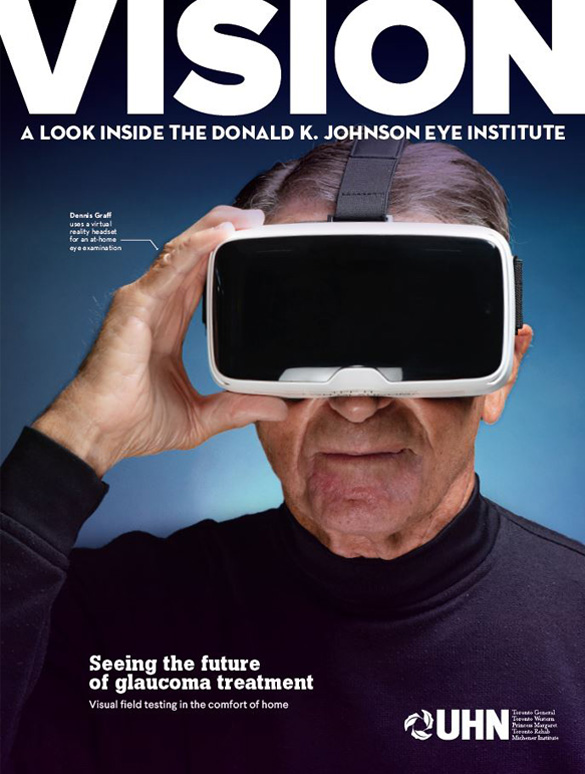Nicole Moscoe first noticed in kindergarten that something was wrong with her eyes. Even when squinting, she could not make out the white letters the teacher wrote on the blackboard.
It soon became clear to Nicole's father Ken that there was a lot more his daughter couldn't see: the lettering on street signs or in grocery stores, or the details in video games. When she began using a computer, Nicole had to memorize the keyboard because the white letters and numbers were a blur.
Like most parents, Ken assumed Nicole's vision problem could be fixed with a corrective device. But after visiting optometrists, then specialists, and getting glasses for Nicole, the Moscoes realized there was no quick fix. She had idiopathic foveal hypoplasia, a condition where there is a malformation of a depression in the retina called the fovea that is responsible for clear, sharp vision. Ken says doctors were not optimistic about the possibility of treatment.
"Everyone was stumped. And it really affected the quality of her life," he says of Nicole, now 12. "We were actually exploring options outside of Canada to treat this."
Feeling discouraged, Ken heard about the innovative approaches being pioneered by Dr. Monica Daibert-Nido and the team at the Donald K. Johnson Eye Institute's Low Vision Rehabilitation Program. Nicole's doctors at Toronto's SickKids referred the family to the program.
After assessing Nicole, Dr. Daibert-Nido recommended biofeedback, a revolutionary treatment that employs visual imagery to retrain the brain into using parts of the eye that are undamaged or less damaged.
"Biofeedback is a technique where patients learn to use their remaining vision," says Dr. Daibert-Nido, clinician-scientist at the Donald K. Johnson Eye Institute.
The process is relatively simple: patients look into a device called a microperimeter that projects a target that they need to follow with their eyes. A member of the team then tweaks the target to ensure that areas of the eye that were formerly unused become active.
"The brain will train ocular muscles to focus on that spot," says Dr. Daibert-Nido.

